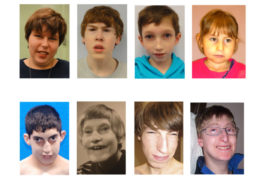Some social issues in DYRK1A model mice stem from faulty inhibitory circuits
Alterations in inhibitory circuits and difficulties in social recognition characterize mice missing one copy of DYRK1A, a gene linked to autism.

Alterations in inhibitory circuits and difficulties in social recognition characterize mice missing one copy of DYRK1A, a gene linked to autism.

The findings add to the growing evidence that genes with disparate functions can play similar roles in brain development.

Many autism-linked genes are somehow tied to cilia, the tiny hair-like sensors that stud a cell’s surface. But the question remains whether, and how, cilia differences contribute to the condition.

Zebrafish with mutations in 10 different autism-linked genes show a range of unique and shared phenotypes.

Researchers can roughly project what autistic children’s lives will look like years down the road. But how good is their crystal ball — and what are its benefits?

A genetic therapy and an existing drug both restore typical brain size in mice missing DYRK1A, a top autism candidate gene, in the cerebral cortex, a new study shows. The animals typically have smaller brains than controls.

A controversial idea about how cells compartmentalize their contents into droplets — like beads of oil in water — could be key to understanding autism, says Julie Forman-Kay.

Mutations in any of 10 autism-linked genes in frogs lead to the same overabundance of brain cells that develop into neurons; the sex hormone estrogen lowers this excess.

Parents of children with rare autism-linked mutations are banding together for support and to join forces with scientists, accelerating the pace of research.

Children with mutations in a gene called DYRK1A, a leading autism candidate, have a distinct set of features, including intellectual disability, speech delay, motor problems and a small head.